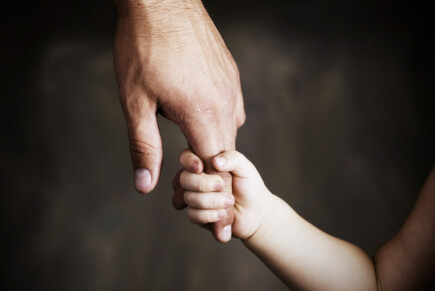
How to organize a charity campaign to help children's hospice
Before we give a precise answer to the topic, how to organize a charity campaign in support of a children's hospice, let's emphasize a few essential and leading subtopics. They are related both to the role of children's hospices and the most common diseases in children placed in them.
Role and importance of children's hospices
What are children's hospices
Children's hospices are specialized medical centers that offer distinct care and support to children who suffer from terminal and incurable illnesses, and are also supportive to their families. These unique institutions are designed to provide a dignified and comfortable last stage of life for children who cannot be cured.
How children's hospitals work
Children's hospices operate with a clear direction and the idea of providing holistic care to their patients. Such includes physical, emotional, social and spiritual support. They provide medical care, psychological support, a palette of therapeutic services and activities, and accompany the families of such children, throughout the process.
Role and importance of children's institutions where patients are admitted for treatment
Children's hospitals strive to create an environment in which children and their parents feel comfortable, safe and supported. Hospice staff are trained to care for the individual needs of each child and to provide support to families through the difficult process of illness and loss.
Supporting families after the death of a child is also an important part of the work of children's hospices. They offer help and advice regarding the grieving process and help families adjust to the new reality.
Children's hospices are valuable institutions that play an important role in society by providing specialist care and support to children and their families at the most difficult times in their lives. They help the very young and adolescents to live out their last days with dignity and comfort, and families to cope with hardship and loss.
Before we give answers on the topic, how to organize a charity campaign in support of children's hospice, which we will talk about in more detail below, as well as how to make it happen on the platform PavelAndreev.ORG. Let us now turn our attention to the most common diseases that children in children's hospices are accommodated with:
The most common diseases of children in children's hospices
Institutions such as children's hospices accept patients for treatment and provide the necessary care. These specialized medical centers provide not only medical care but also physical, psychological and emotional support to the affected children. Let's take a look at, some of the common ailments faced by children placed in children's hospices.
- Different types of cancer:
Cancer is one of the most common diseases in children. Such are placed in hospices for more care, observation, therapies and treatments. Types of cancer in children include leukemia, brain tumors, bone cancer and other cancers. Children who have cancer need personalized medical care as well as support to cope with stress and emotional challenges. Here's why these types of hospices work in this way.
- Genetic and rare diseases:
Children who suffer from genetic and rare diseases are often placed in children's hospices. These can be a number of diseases such as cystic fibrosis, cystic fibrosis, metabolic disorders and other genetic defects. These diseases require specialized care and support. Care includes specialist medical monitoring, medication and support to manage symptoms, and improve the quality of life for children.
- Neurological diseases:
Children with neurological conditions, such as cerebral palsy, multiple sclerosis, Down syndrome and autonomic neurological dysfunction, may also be placed in children's hospices. Care for these children includes physical therapy, occupational therapy, speech therapy and other methods to aid their physical and psychological development.
- Heart disease:
Children with heart conditions, such as congenital mental defects or heart defects, may need individualized care and treatment. Children's hospices provide medical support, monitoring and accompanying therapy for these children and their families.
- Respiratory diseases:
Children with respiratory diseases, such as asthma, cystic fibrosis, and chronic obstructive pulmonary disease (COPD), are also placed in children's hospices. Care for these children includes medical monitoring, medications and support to improve respiratory function and relieve symptoms.
- Congenital abnormalities:
Children with congenital anomalies such as spina bifida, serious heart malformations or genetic syndromes are again among the children who are often placed in children's hospices.
- Neonatal diseases:
Children who are born prematurely, have birth trauma, neonatal infection, congenital anomalies, and hemolytic disorders also include such neonatal diseases and suffer from respiratory dysfunction.
These are just a few of the bad things that can befall children and youth, and their families, and open the door to pediatric hospice. Today's topic, however, is a different one, and it focuses on how to set up a fundraiser to help a children's hospice.
And, this is the place to mention that it can start with your participation in the Pavel Andreev Foundation. It's a great platform where thousands of people share their stories, start donation campaigns or are donors themselves. On the PavelAndreev.ORG site anyone can join, view current campaigns and organize their own charity. It's easy, also to support existing fundraising campaigns anyone, according to your possibilities and views.
The steps to organise a fundraising campaign in support of a hospice for children and young people are as follows:
Organising a charity campaign to help a children's hospice is an exciting way to make a difference to the lives of children and their parents. If you're determined to get involved with this truly meaningful cause, it's important to know what moves to make. Only by going through them the first time will you be able to run a successful charity campaign. What are these steps you need to take yourself and what exactly to do, see below:
- Research and Planning:
The first step before starting a charity campaign for a children's hospice is to research and plan carefully. Identify the purpose of the campaign. Include statistics about how much money is needed and how it will be used. Research different ways to raise funds and choose the option that best fits your goals and capabilities.
- Create an appealing and compelling story:
The story is the heart of any fundraising campaign. Create an appealing and compelling story to get people engaged and donating to your cause. Use real-life examples and personal stories to show the importance of children's hospices and the need for support.
- Identify your target audience:
Understand who your target audience is and how to reach them. Use different communication channels. This could be social media, website, email and printed materials. This is how you can successfully get people's attention and support.
- Create a marketing plan:
Create a marketing plan that includes different strategies and tactics to promote your campaign. Explore opportunities to collaborate with local organizations, businesses and media outlets to help you reach more people. Remember, once you've launched your campaign to raise funds for children in children's hospice at the Pavel Andreev Foundation , you should upload news about what's happening periodically. This should happen at least once every 2-3 days. This way you will keep your donors informed about what the funds are being spent on and how the healing process is going for the child for whom the campaign is running.
- Use online platforms and social media:
The internet and social media are powerful tools for reaching large numbers of people. Use online platforms to collect donations, such as the PavelAndreev.ORG platform, which provides a convenient and secure donation option. Create a social media page or profile to share information about your campaign and spur people into action.
- Be grateful
Don't forget to thank your donors. Without their help, your campaign couldn't be done, so express your appreciation with a few words. An even better move is to express with a personal letter to each donor.
What else you need to know when planning and organising a fundraiser to help a child in children's hospice
Organizing a fundraiser to help a child in hospice care is an important and responsible task. In the lines above we have introduced you to some of the basic steps in planning and organising such a campaign. In this section, we will look at some additional aspects to consider to make your charity campaign even more successful.
- Collaborate with partners and sponsors:
Consider collaborating with local organizations, businesses, and other charitable foundations. They can provide additional support, resources and funding for your campaign. These types of partnerships can help raise the profile of your campaign and attract more donors.
- Volunteering and community mobilisation:
Involve volunteers in your campaign. They can help with a variety of tasks such as event planning, donation collection, marketing and communication. Here, even posting the news, uploading photos about the child being fundraised for or the children's hospice itself can be a big help.
Mobilizing the community is key to the success of any campaign, including your current one. Organise those around you, local schools, businesses and organisations to get involved with the cause and help fundraise, not just online but even physically.
- Organize events and campaigns:
Consider organising events and campaigns to support your charitable cause. This could be charity concerts, competitions, games, sporting events, auctions or other forms of fundraising. Use creative and innovative ideas to attract people's attention and motivate them to donate.Organise a charity bazaar or join one.Check out our Facebook groupBazaar. You can buy an item there and the amount you pay for it will go to a charitable cause.
- Communication and news:
Communication is essential for a successful charity campaign. Use a variety of communication channels such as social media, website, printed materials and email. This can share information about your campaign and get people's attention. Keep in regular contact with your donors and share any news about the achievements and impact of their donations.
- Transparency and accountability:
You may perceive a slight overlap in some of the points, but let there be one to solidify the steps and moves for a successful campaign. So ensure transparency and accountability in the use of the funds raised. Show your donors exactly how their donations are being used and what accomplishments have been achieved because of them. Provide regular reports and statistics to show the impact of their wholehearted help and support in the recovery of a child in a children's hospital.
Launch a donation campaign at the Pavel Andreev Foundation
If anyone is still asking questions like: why and how to organize a charity campaign to help a child in hospice, then let's end the topic with the words of Paulo Coelho:
"A child can always teach an adult three things: to be happy for no reason, to always be busy with something, and to know how to demand with all his strength what he wants."
Which of the three you most strongly insist upon, it remains for you to know. It can happen by giving a child a chance to just show you!

What is the approximate cost of publishing a book?
If your main goal is simply to get your book printed, using free self-publishing platforms may be the right decision. The writing itself is the biggest reward for many people, and getting published may be just a formality. However, if you want to sell your book and reach a wide audience, you need to invest in professional services.Without them, it's hard to compete with traditionally published books. Factors such as professional editing, cover gr...

What is a philanthropist and philanthropy?
Everyone can be a philanthropist and be more effective in making a difference. Here's how. A philanthropist is a person who donates time, money, experience, skills or talent to help create a better world. Anyone can be a philanthropist, regardless of status or net worth. What is philanthropy? The Greek playwright Aeschylus coined the term philanthropy in the 5th century B.C. It meant "love of mankind." Today, philanthropy means generosity in a...

Narcistic Psychotic Disorder: Symptoms, Treatment and How We Can Help You
Mental health is increasingly important in society, and interest in this topic is growing significantly. Mental illness affects a huge number of people worldwide. One of the lesser known illnesses affecting mental health is narcissistic personality disorder. Narcissistic personality disorder is a condition that often goes undiagnosed, and this leads to even greater suffering for those affected. People with this mental condition have great diffic...

How to quickly raise money to adopt a child
Children are the greatest gift a person can receive throughout his life! And if fate has not been kind enough to ordain you to be a parent, institutions and organizations have found a way to give this right to anyone who has the heart and soul for it. According to statistics from surveys done in 2018, the figure of 430,000 children, works in plus towards foster families. For adopted children, a home and unconditional dedication and love is extre...

